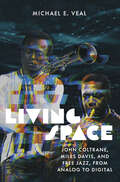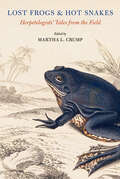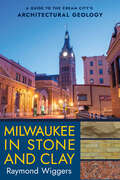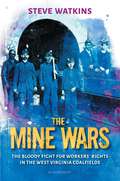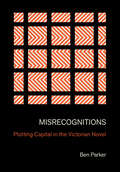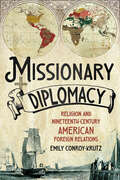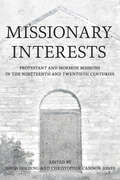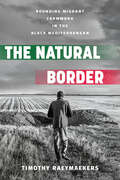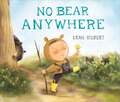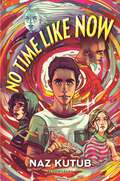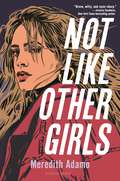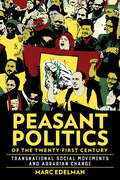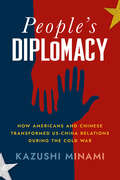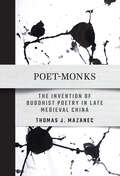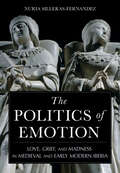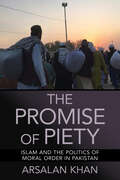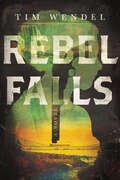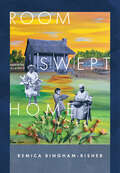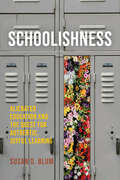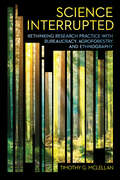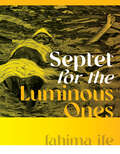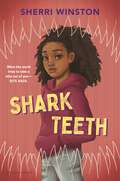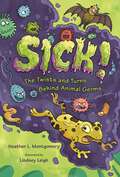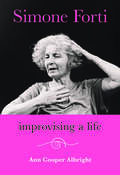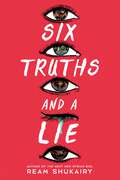- Table View
- List View
Living Space: John Coltrane, Miles Davis, and Free Jazz, from Analog to Digital (Music / Culture)
by Michael E. VealLiving Space: John Coltrane, Miles Davis, and Free Jazz, from Analog to Digital fuses biography and style history in order to illuminate the music of two jazz icons, while drawing on the discourses of photography and digital architecture to fashion musical insights that may not be available through the traditional language of jazz analysis. The book follows the controversial trajectories of two jazz legends, emerging from the 1959 album Kind of Blue. Coltrane's odyssey through what became known as "free jazz" brought stylistic (r)evolution and chaos in equal measure. Davis's spearheading of "jazz-rock fusion" opened a door through which jazz's ongoing dialogue with the popular tradition could be regenerated, engaging both high and low ideas of creativity, community, and commerce. Includes 42 illustrations.
Lost Frogs and Hot Snakes: Herpetologists' Tales from the Field
by Martha L. CrumpLost Frogs and Hot Snakes reveals the thrills and travails that herpetologists experience when working with amphibians and reptiles in the wild. With essays from fifty field biologists, this volume, edited by Martha L. Crump, presents a multifaceted yet intimate look at life in pursuit of knowledge about the natural world. From the beaches of Peru to the mountains of China, the stories in this collection place readers in the boots of field biologists as they watch, count, experiment, and survey. Some recall mishaps and misadventures—contending with leeches, dangling off a precipice while in a truck. Others tell of once-in-a-lifetime encounters—discovering a new frog species, spotting a rare snake. Together, these stories offer an understanding of what field biology is, what field biologists do, and how they go about doing it. Written with candor, warmth, and a dash of humor, the stories in Lost Frogs and Hot Snakes will encourage readers to appreciate the value of engaging with nature and of the amphibians and reptiles so critical to the vitality of our planet.
Milwaukee in Stone and Clay: A Guide to the Cream City's Architectural Geology
by Raymond WiggersMilwaukee in Stone and Clay follows directly in the footsteps of Raymond Wiggers's previous award-winning book, Chicago in Stone and Clay. It offers a wide-ranging look at the fascinating geology found in the building materials of Milwaukee County's architectural landmarks. And it reveals the intriguing and often surprising links between science, art, and engineering. Laid out in two main sections, the book first introduces the reader to the fundamentals of Milwaukee's geology and its amazing prehuman history, then provides a site-by-site tour guide. Written in an engaging, informal style, this work presents the first in-depth exploration of the interplay among the region's most architecturally significant sites, the materials they're made of, and the sediments and bedrock they're anchored in. Raymond Wiggers crafted Milwaukee in Stone and Clay as an informative and exciting overview of this city. His two decades of experience leading architectural-geology tours have demonstrated the popularity of this approach and the subject matter.
The Mine Wars: The Bloody Fight for Workers' Rights in the West Virginia Coalfields
by Steve WatkinsFor fans of Steve Sheinkin and Deb Heiligman, a riveting true story of the West Virginia coal miners who ignited the largest labor uprising in American history.In May of 1920, in a small town in the mountains of West Virginia, a dozen coal miners took a stand. They were sick of the low pay in the mines. The unsafe conditions. The brutal treatment they endured from mine owners and operators. The scrip they were paid-instead of cash-that could only be used at the company store.They had tried to unionize, but the mine owners dug in. On that fateful day in May 1920, tensions boiled over and a gunfight erupted-beginning a yearlong standoff between workers and owners.The miners pleaded, then protested, then went on strike; the owners retaliated with spying, bribery, and threats. Violence escalated on both sides, culminating in the 1921 Battle of Blair Mountain, the largest labor uprising in United States history.In this gripping narrative nonfiction book, meet the resolute and spirited people who fought for the rights of coal miners, and discover how the West Virginia Mine Wars paved the way for vital worker protections nationwide. More than a century later, this overlooked story of the labor movement remains urgently relevant.
Misrecognitions: Plotting Capital in the Victorian Novel
by Ben ParkerMisrecognitions mounts a vigorous defense of the labyrinthine plotting of Victorian novels, notorious for their implausible concluding revelations and coincidences. Critics have long decried Victorian recognition scenes—the reunions and retroactive discoveries of identity that too conveniently bring the story to a close—as regrettable contrivances. Ben Parker counters this view by showing how these recognition scenes offer a critique of the social and economic misrecognitions at work in nineteenth-century capitalism. Through a meticulous analysis of novels by Charles Dickens, Anthony Trollope, and Henry James, as well as Arthur Conan Doyle's Sherlock Holmes stories, Misrecognitions tracks how the Victorian novel translates the financialized abstractions of capital into dramas of buried secrets and disguised relations. Drawing on Karl Marx's account of commodity fetishism and reification, Parker contends that, by configuring capital as an enigma to be unveiled, Victorian recognition scenes dramatize the inversions of agency and temporality that are repressed in capitalist production. In plotting capital as an agent of opacity and misdirection, Victorian novels and their characteristic dialectic of illusion and illumination reveal the plot hole in capitalism itself.
Missionary Diplomacy: Religion and Nineteenth-Century American Foreign Relations
by Emily Conroy-KrutzMissionary Diplomacy illuminates the crucial place of religion in nineteenth-century American diplomacy. From the 1810s through the 1920s, Protestant missionaries positioned themselves as key experts in the development of American relations in Asia, Africa, the Pacific, and the Middle East. Missionaries served as consuls, translators, and occasional trouble-makers who forced the State Department to take actions it otherwise would have avoided. Yet as decades passed, more Americans began to question the propriety of missionaries' power. Were missionaries serving the interests of American diplomacy? Or were they creating unnecessary problems? As Emily Conroy-Krutz demonstrates, they were doing both. Across the century, missionaries forced the government to articulate new conceptions of the rights of US citizens abroad and of the role of the US as an engine of humanitarianism and religious freedom. By the time the US entered the first world war, missionary diplomacy had for nearly a century created the conditions for some Americans to embrace a vision of their country as an internationally engaged world power. Missionary Diplomacy exposes the longstanding influence of evangelical missions on the shape of American foreign relations.
Missionary Interests: Protestant and Mormon Missions of the Nineteenth and Twentieth Centuries
by Edited by David Golding and Christopher Cannon JonesIn Missionary Interests, David Golding and Christopher Cannon Jones bring together works about Protestant and Mormon missionaries in the nineteenth and twentieth centuries, charting new directions for the historical study of these zealous evangelists for their faith. Despite their sectarian differences, both groups of missionaries shared notions of dividing the world categorically along the lines of race, status, and relative exoticism, and both employed humanitarian outreach with designs to proselytize.American missionaries occupied liminal spaces: between proselytizer and proselytized, feminine and masculine, colonizer and colonized. Taken together, the chapters in Missionary Interests dismantle easy characterizations of missions and conversion and offer an overlooked juxtaposition between Mormon and Protestant missionary efforts in the nineteenth and twentieth centuries.
The Natural Border: Bounding Migrant Farmwork in the Black Mediterranean
by Timothy RaeymaekersThe Natural Border tells the recent history of Mediterranean rural capitalism from the perspective of marginalized Black African farm workers. Timothy Raeymaekers shows how in the context of global supply chains and repressive border regimes, agrarian production and reproduction are based on fundamental racial hierarchies.Taking the example of the tomato—a typical 'Made in Italy' commodity—Raeymaekers asks how political boundaries are drawn around the land and the labor needed for its production, what technologies of exclusion and inclusion enable capitalist operations to take place in the Mediterranean agrarian frontier, and which practices structure the allocation, use and commodification of land and labor across the tomato chain. While the mobile infrastructures that mobilize, channel, commodify and segregate labor play a central role in the 'naturalization' of racial segregation, they are also terrains of contestation and power—and thus, as The Natural Border demonstrates, reflect the tense socio-ecological transformation the Mediterranean border space is going through today.
No Bear Anywhere
by Leah GilbertA young boy learns to cope with disappointment and embrace the unexpected in this infectiously charming, beautifully illustrated picture book.When his family takes a walk on Bear Creek Trail, Bruin is determined to spot his favorite animal (a bear). Before too long, he notices something! It's a . . . pinecone! Not a bear, but that's okay. A few minutes later, Bruin stops again: He's seen a . . . flower! No bear anywhere, but there's still plenty of time. Eventually, they make it all the way to the . . . cave! But when there is no bear anywhere in the cave, Bruin is as sad as could be. Can he turn his day around, even when there's no bear? Or, wait a minute-was a bear there, after all?! Leah Gilbert's gorgeous art shines in this playful and charming story about finding wonder and joy in the world around us, even when life takes unexpected turns.
No Time Like Now
by Naz KutubA teen finds himself in a race against time when he learns he's given away more years than he has left to live in this thought-provoking speculative romp.It's been one year since Hazeem's father passed away unexpectedly, and one year since Hazeem got his special ability: He can grant any living thing extra time. Since then, he's been randomly granting people more years to live: his old friend Holly, his study buddy Yamany, his crush Jack. . . . The only problem is, none of them wanted to spend any of that time with Hazeem. Now, Hazeem spends most of his days with his grandmother. When she experiences a heart attack, Hazeem is quick to use his power to save her--until Time themself appears and tells Hazeem he has accrued a time debt, having given away more life than he has left to live and putting the entire timeline in serious danger of collapse. In order to save the timeline and himself, Hazeem must take back some of the life he has granted other people. Suddenly, Hazeem is on a journey through and against time, but as he confronts the events of the past, he must confront the mistakes he made along the way. Hazeem will come to realize that when it comes to time, quality is more important to quantity--but is it too late to reclaim the life he's given away so he can really start living?No Time Like Now is timely twist on A Christmas Carol that takes readers on a thought-provoking adventure, asking what matters most in life.
Not Like Other Girls
by Meredith Adamo“Powerful, brilliantly plotted, voicey, gripping, beautiful, heart-wrenching, hilarious . . . Read this book.” -Liz Lawson, New York Times bestselling author of The AgathasWhen Jo-Lynn Kirby 's former best friend-pretty, nice Maddie Price-comes to her claiming to be in trouble, Jo assumes it's some kind of joke. After all, Jo has been an outcast ever since her nude photos were leaked-and since everyone decided she deserved it. There's no way Maddie would actually come to her for help.But then Maddie is gone.Everyone is quick to write off Maddie as a runaway, but Jo can't shake the feeling there's more to the story. To find out the truth, Jo needs to get back in with the people who left her behind-and the only way back in is through Hudson Harper-Moore. An old fling of Jo's with his own reasons for wanting to find Maddie, Hudson hatches a fake dating scheme to get Jo back into their clique. But being back on the inside means Jo must confront everything she'd rather forget: the boys who betrayed her, the whispers that she had it coming, and the secrets that tore her and Maddie apart. As Jo digs deeper into Maddie's disappearance, she's left to wonder who she's really searching for: Maddie, or the girl she used to be.Not Like Other Girls is a stunning debut that takes a hard look at how we treat young women and their trauma, through the lens of a missing girl and a girl trying to find herself again.
Peasant Politics of the Twenty-First Century: Transnational Social Movements and Agrarian Change (Cornell Series on Land: New Perspectives on Territory, Development, and Environment)
by Marc EdelmanPeasant Politics of the Twenty-First Century illuminates the transnational agrarian movements that are remaking rural society and the world's food and agriculture systems. Marc Edelman explains how peasant movements are staking their claims from farmers' fields to massive protests around the world, shaping heated debates over peasants' rights and the very category of "peasant" within the agrarian organizations and in the United Nations.Edelman chronicles the rise of these movements, their objectives, and their alliances with environmental, human rights, women's, and food justice groups. The book scrutinizes high-profile activists and the forgotten genealogies and policy implications of foundational analytical frameworks like "moral economy," and concepts, such as "food sovereignty" and "civil society." Peasant Politics of the Twenty-First Century charts the struggle of agrarian movements in the face of land grabbing, counter agrarian reform, and a looming climate catastrophe, and celebrates engaged research from Central America to the UN Human Rights Council in Geneva.
People's Diplomacy: How Americans and Chinese Transformed US-China Relations during the Cold War (The United States in the World)
by Kazushi MinamiIn People's Diplomacy, Kazushi Minami shows how the American and Chinese people rebuilt US-China relations in the 1970s, a pivotal decade bookended by Richard Nixon's 1972 visit to China and 1979 normalization of diplomatic relations. Top policymakers in Washington and Beijing drew the blueprint for the new bilateral relationship, but the work of building it was left to a host of Americans and Chinese from all walks of life, who engaged in "people-to-people" exchanges. After two decades of estrangement and hostility caused by the Cold War, these people dramatically changed the nature of US-China relations. Americans reimagined China as a country of opportunities, irresistible because of its prodigious potential, while Chinese reinterpreted the United States as an agent of modernization, capable of enriching their country and rejuvenating their lives. Drawing on extensive research at two dozen archives in the United States and China, People's Diplomacy redefines contemporary US-China relations as a creation of the American and Chinese people.
Poet-Monks: The Invention of Buddhist Poetry in Late Medieval China
by Thomas J. MazanecPoet-Monks focuses on the literary and religious practices of Buddhist poet-monks in Tang-dynasty China to propose an alternative historical arc of medieval Chinese poetry. Combining large-scale quantitative analysis with close readings of important literary texts, Thomas J. Mazanec describes how Buddhist poet-monks, who first appeared in the latter half of Tang-dynasty China, asserted a bold new vision of poetry that proclaimed the union of classical verse with Buddhist practices of repetition, incantation, and meditation.Mazanec traces the historical development of the poet-monk as a distinct actor in the Chinese literary world, arguing for the importance of religious practice in medieval literature. As they witnessed the collapse of the world around them, these monks wove together the frayed threads of their traditions to establish an elite-style Chinese Buddhist poetry. Poet-Monks shows that during the transformative period of the Tang-Song transition, Buddhist monks were at the forefront of poetic innovation.
The Politics of Emotion: Love, Grief, and Madness in Medieval and Early Modern Iberia
by Nuria Silleras-FernandezThe Politics of Emotion explores the intersection of powerful emotional states—love, melancholy, grief, and madness—with gender and political power on the Iberian Peninsula from the Middle Ages to the early modern period. Using an array of sources—literary texts, medical treatises, and archival documents—Nuria Silleras-Fernandez focuses on three royal women: Isabel of Portugal (1428–1496), queen-consort of Castile; Isabel of Aragon (1470–1498), queen-consort of Portugal; and Juana of Castile (1479–1555), queen of Castile and its empire. Each of these women was perceived by their contemporaries as having gone "mad" as a result of excessive grief, and all three were related to Isabel the Catholic (1451–1504), queen of Castile and a woman lauded in her time as a paragon of reason.Through the lives and experiences of these royal women and the observations, judgments, and machinations of their families, entourages, and circles of writers, chronicles, courtiers, moralists, and physicians in their orbits, Silleras-Fernandez addresses critical questions about how royal women in Iberia were expected to behave, the affective standards to which they were held, and how perceptions about their emotional states influenced the way they were able to exercise power. More broadly, The Politics of Emotion details how the court cultures in medieval and early modern Castile and Portugal contributed to the development of new notions of emotional excess and mental illness.
The Promise of Piety: Islam and the Politics of Moral Order in Pakistan
by Arsalan KhanIn The Promise of Piety, Arsalan Khan examines the zealous commitment to a distinct form of face-to-face preaching (dawat) among Pakistani Tablighis, practitioners of the transnational Islamic piety movement the Tablighi Jamaat. This group says that Muslims have abandoned their religious duties for worldly pursuits, creating a state of moral chaos apparent in the breakdown of relationships in the family, nation, and global Islamic community. Tablighis insist that this dire situation can only be remedied by drawing Muslims back to Islam through dawat, which they regard as the sacred means for spreading Islamic virtue. In a country founded in the name of Muslim identity and where Islam is ubiquitous in public life, the Tablighi claim that Pakistani Muslims have abandoned Islam is particularly striking. The Promise of Piety shows how Tablighis constitute a distinct form of pious relationality in the ritual processes and everyday practices of dawat and how pious relationality serves as a basis for transforming domestic and public life. Khan explores both the promise and limits of the Tablighi project of creating an Islamic moral order that can transcend the political fragmentation and violence of life in postcolonial Pakistan.
Rebel Falls: A Novel
by Tim WendelWith Rebel Falls, Tim Wendel takes us to late summer of 1864. The Civil War rages on. Sherman is marching on Atlanta, while the armies of Grant and Lee battle across Virginia. In the North, war-weariness has made Lincoln's bid for reelection seem doubtful. As the fate of the nation "conceived in Liberty" hangs in the balance, Confederate agents gather in Niagara Falls to plan one last audacious maneuver to turn the tide of the conflict. Rory Chase, a capable yet haunted young woman eager to contribute to the Union cause, accepts a mission from the Secretary of State, William Seward, to travel to Niagara Falls and prevent two rebel spies, John Yates Beall and Bennet Burley, from seizing the U.S.S. Michigan on Lake Erie and bombarding Buffalo, Cleveland, and other northern cities to sow fear and disorder ahead of the upcoming election. To succeed, Rory must gain the rebel spies' trust and, with the help of the Underground Railroad network still operating out of the elegant Cataract House hotel overlooking the Falls, foil their desperate gambit. But can she maintain the pretense of being a Confederate sympathizer long enough to unravel Beall and Burley's ingenious plot?With actual events underpinning the tumultuous story in Rebel Falls, a forgotten chapter in the history of the Civil War is revealed. Far from frontlines, Wendel's exciting, character-driven narrative about a consequential struggle in the shadow of Niagara Falls' dramatic beauty is gripping from start to finish.
Room Swept Home (Wesleyan Poetry Series)
by Remica Bingham-RisherRoom Swept Home serves as a gloriously rendered magnifying glass into all that is held in the line between the private and public, the investigative and generative, the self and those who came before us. In a strange twist of kismet, two of Bingham-Risher's ancestors intersect in Petersburg, Virginia, forty years before she herself is born: her paternal great-great-great grandmother, Minnie Lee Fowlkes, is interviewed for the Works Progress Administration Slave Narratives in Petersburg in 1937, and her maternal grandmother, Mary Knight, is sent to Petersburg in 1941, diagnosed with "water on the brain"—postpartum depression being an ongoing mystery—nine days after birthing her first child. Marrying meticulous archival research with Womanist scholarship and her hallmark lyrical precision, Bingham-Risher's latest collection treads the murky waters of race, lineage, faith, mental health, women's rights, and the violent reckoning that inhabits the discrepancy between lived versus textbook history, asking: What do we inherit when trauma is at the core of our fractured living? [sample poem] XI. the more ground covered, the more liberated you became I am scared my mind will turn on me. I am scared I will be naked in a burning house. I am scared my children won't outpace me.I am scared my children (who aren't made by me) believe I am a sad imitation of the others.I am scared I will gather in a roomwhere everyone will ask me to rememberand when I don't lie they'll say I'd hate to be you. I've lived long enough to be scared my kidneys will give out on me. I've lived long enough to know just when they should. I have never shared my fears with anyone; I am scared they will map the land and take liberties. Will the women be ashamed? I'm scared to ask. What will live again? What will die with me?
Schoolishness: Alienated Education and the Quest for Authentic, Joyful Learning
by Susan D. BlumIn Schoolishness, Susan D. Blum continues her journey as an anthropologist and educator. The author defines "schoolishness" as educational practices that emphasize packaged "learning," unimaginative teaching, uniformity, constant evaluation by others, arbitrary forms, predetermined time, and artificial boundaries, resulting in personal and educational alienation, dependence, and dread.Drawing on critical, progressive, and feminist pedagogy in conversation with the anthropology of learning, and building on the insights of her two previous books Blum proposes less-schoolish ways of learning in ten dimensions, to lessen the mismatch between learning in school and learning in the wild. She asks, if learning is our human "superpower," why is it so difficult to accomplish in school? In every chapter Blum compares the fake learning of schoolishness with successful examples of authentic learning, including in her own courses, which she scrutinizes critically.Schoolishness is not a pedagogical how-to book, but a theory-based phenomenology of institutional education. It has moral, psychological, and educational arguments against schoolishness that, as Blum notes, "rhymes with foolishness."
Science Interrupted: Rethinking Research Practice with Bureaucracy, Agroforestry, and Ethnography (Expertise: Cultures and Technologies of Knowledge)
by Timothy G. McLellanScience Interrupted examines how scientists in China pursue environmental sustainability within the constraints of domestic and international bureaucracies. Timothy G. McLellan offers a theoretical framework for analyzing the formal procedural work of Chinese bureaucracy—work that is overlooked when China scholars restrict their gaze to the informal and interpersonal channels through which bureaucracy is often navigated. Homing in on an agroforestry research organization in southwest China, the author takes the experiences of the organization's staff in navigating diverse international funding regimes and authoritarian state institutions as entry points for understanding the pervasiveness of bureaucracy in contemporary science. He asks: What if we take the tools, sensibilities, and practices of bureaucracies seriously not only as objects of critique but as resources for re-thinking scientific practice? Extending a mode of anthropological research in which ethnography serves as source of theory as well as source of data, Science Interrupted thinks with, and not only against, bureaucracy. McLellan shows that ethnographic engagement with bureaucracy enables us to imagine more democratic and more collaborative modes of scientific practice.
Septet for the Luminous Ones (Wesleyan Poetry Series)
by fahima ifeContinuing her search for a neotropical mythos, in this brilliant second collection poet fahima ife articulates various scenes of subduction. Spoken in quiet recognition and grounded in desire, Septet for the Luminous Ones imagines a lush soundscape textured in oblique spiritual fusion of the Taíno and Yoruba. Or, what it sounded like coming together for the first time, and what it sounds like ever after—breathless, diaspora calling. Similar to the incidents in Maroon Choreography, what resounds in these poems is an ecstatic love song of the Caribbean Americas, of the main lands and islands, shaped and reshaped as breathwork, ritual, communion, and fantasy. In essence, the collection speaks to raise the vibrational frequencies of all species on Earth through a sensual pulse of Black English.From Alchemical Sirensit flickers in balsamic appealmoist in the palms of our handsa psalm a lamp a sap in our lapsan aspplausible love song after love poemswere last put on holdas in b l a ck a r tthe new black art is this — find the lost soul and love it
Shark Teeth
by Sherri WinstonFrom National Book Award longlisted author Sherri Winston comes an important middle grade novel about a girl's tumultuous journey to keep her family together, even when she's falling apart.Sharkita “Kita” Hayes is always waiting.Waiting for her mama to mess up.Waiting for social services to be called again.Waiting for her and her siblings to be separated.Waiting for her worst fear to come true.But Mama promises things are different now. She's got a good job, she's stopped drinking, stopped going out every night-it's almost enough to make Kita believe her this time. But even as Kita's life is going good, she can't shake the feeling that everything could go up in flames at any moment. When her assistant principal and trusted dance coach starts asking questions about her home life, Kita is more determined than ever to keep up appearances and make sure her family stays together-even if it means falling apart herself. As the threat of her family being separated again circles like a shark in the water, the pressure starts to get to Kita. But could it be that Kita's worst fear is actually the best thing that could happen to her family . . . and to her?
Sick!: The Twists and Turns Behind Animal Germs
by Heather L. MontgomeryWhen a super sickness lands on the land, when a parasite becomes more than a pest, when an infection ignites an epidemic, what's a body to do? Your body is an animal body, so why not ask the animals?Follow the scientists, around the world and into their labs, who are studying animals and the germs that attack them. From fungus-ridden frogs with fevers to bacteria-resistant buzzards and everything in-between, animals have A LOT to teach us about infections. But-reader beware!!-the story of germs is filled with twists and turns.In this fascinating, highly visual nonfiction book packed with colorful, comic-style art, you'll discover not only the cool ways that animal bodies (and our bodies) fight back against pesky pathogens, but also the amazing and surprising ways we can learn to work together with germs.Sick! The Twists and Turns Behind Animal Germs is written by Heather L. Montgomery with graphic novel-style art from Lindsey Leigh.
Simone Forti: Improvising a Life
by Ann Cooper AlbrightSimone Forti, groundbreaking improvisor, has spent a lifetime weaving together the movement of her mind with the movement of her body to create a unique oeuvre situated at the intersection of dancing and art practices. Her seminal Dance Constructions from the 1960s crafted a new approach to dance composition and helped inspire the investigations of Judson Dance Theater. In the 1970s, Forti's explorations of animal movements expanded that legacy to launch improvisation as a valuable artform in its own right. From her early forays into vocal accompaniment to her News Animations, Forti has long integrated gesture and text into compelling performances that consistently stretched the boundaries of dance to layer abstract movement with story-telling and political commentary. Her "Land Portraits" series brought an immersive ecological experience to New York City stages in the 1980s, and she is a beloved teacher and mentor whose Body, Mind, World workshops have inspired dancers around the world. In this beautifully written book, author Ann Cooper Albright braids archival research, extensive interviews, and detailed movement analyses of Forti's performances to provide the first kinesthetically-informed and critically-nuanced history of Forti's multifaceted and extensive career.Publication of this book is funded by the Beatrice Fox Auerbach Foundation Fund at the Hartford Foundation for Public Giving.
Six Truths and a Lie
by Ream ShukairySix Muslim teens are falsely accused of a deadly attack in this timely and harrowing examination of America&’s justice system, perfect for fans of Angie Thomas and Samira Ahmed. As fireworks pop off at a rowdy Fourth of July bonfire party, an explosion off the California coast levels an oil rig—resulting in chaos and worse, murder. At the center are six Muslim teens - six patriots, six strangers, and six suspects. An old soul caught in the wrong place. An aspiring doctor. An influencer with a reputation to protect. A perfect daughter with secrets to hide. A soccer star headed for Stanford. An immigrant in love. Each with something to hide and everything to lose. Faced with accusations of terrorism, The Six are caught in a political game that will pit them against each other in exchange for exoneration. They must choose: frame each other to guarantee their own independence or expose their secrets to earn back freedom for them all.
